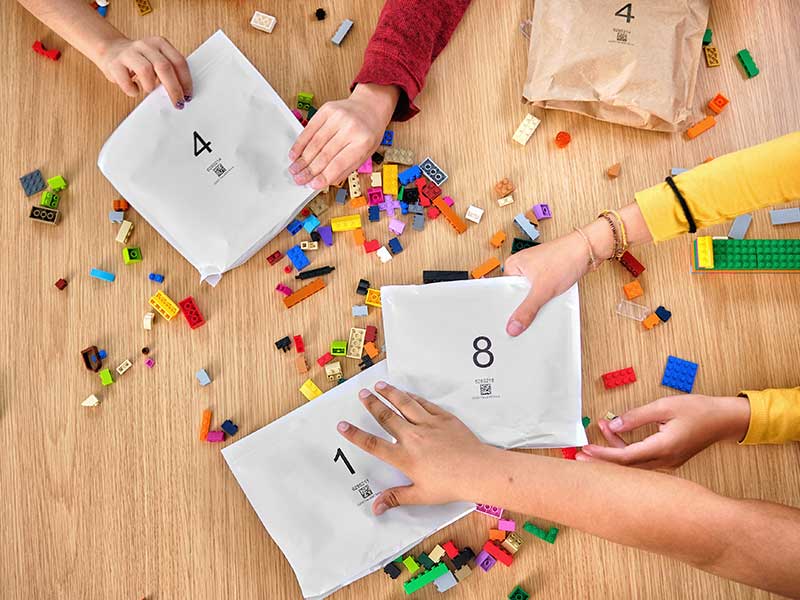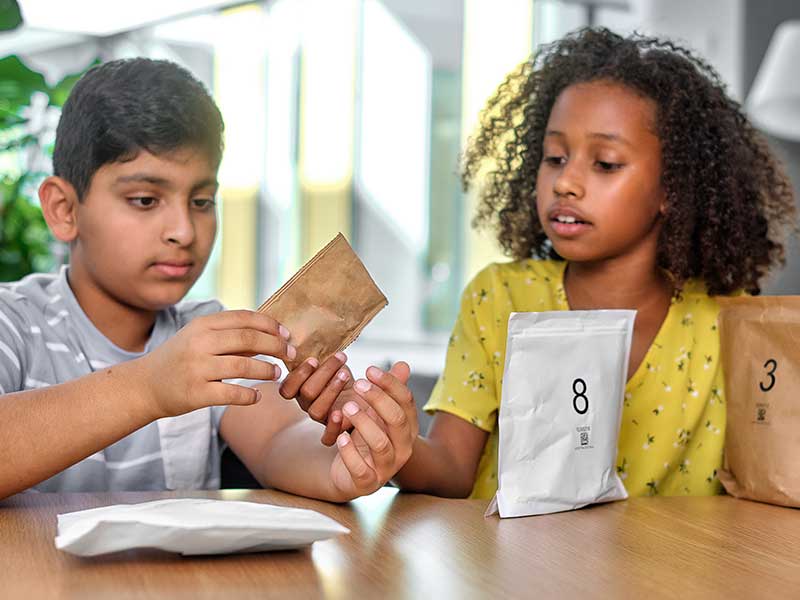The LEGO Group aims to make 100 percent of its packaging from more sustainable materials by the end of 2025. This involves removing all single-use plastic from its packaging.

Paper Mart interviewed Mr. Tim Brooks, Vice President of Environmental Responsibility, The LEGO Group, wherein he stated that the Danish toymaker is currently piloting whether it can potentially use bio-elements more widely in the portfolio and exploring opportunities with recycled plastics.
Paper Mart: The LEGO Group has announced that it would stop using plastic bags inside its boxed sets and replace them with paper packaging? What prompted the LEGO Group to consider this move?
Tim Brooks: We have made a series of moves over the past 10 years to build a better planet for future generations; but as society starts to recover in a post-COVID world, we believe it’s increasingly urgent and important to prioritize environmental and social activity.
It was in 2015 that we had announced our ambition to make our products and packaging 100% sustainable. In 2018, we brought forward the packaging target to 2025 – replacing single-use plastic bags in LEGO boxes with paper bags is a part of this ambition.
We received hundreds of letters from children about the environment, with many asking us to remove single-use packaging. We have been exploring alternatives for a while, but these letters have inspired us to be proactive in making the change.
It was in 2015 that we had announced our ambition to make our products and packaging 100% sustainable.
 PM: What are the sources of the paper you would be using for packaging? Is it from sustainable sources?
PM: What are the sources of the paper you would be using for packaging? Is it from sustainable sources?
TB: The paper that will be used in LEGO boxes from 2021 will be Forest Stewardship Certified paper to ensure that it is sustainably sourced.
PM: LEGO bricks themselves are made of plastic. What alternative materials the company is exploring or have introduced in the past few years?
TB: In 2018, when we first launched bio-elements, we used bio-polyethylene for around a dozen of our botanical elements. During the past few years, we have expanded its use and we now make around 80 elements out of bio-polyethylene.
Over the next three years, we will continue to work to expand the use of bio-polyethylene, for example, elements like accessories, such as mini-figure hair, which lend themselves to the slightly softer properties of bio-polyethylene.
At the same time, we will continue to explore other sustainable materials for use in our bricks such as renewable or recycled materials.
We received hundreds of letters from children about the environment, with many asking us to remove single-use packaging. We have been exploring alternatives for a while, but these letters have inspired us to be proactive in making the change.
PM: As consumers/end users continually push for more sustainable/greener solutions, what are the other packaging concepts that you are planning to introduce?
TB: By the end of 2025, we aim to make 100% of our packaging from more sustainable materials. This involves removing all single-use plastic from our packaging.
We have a team of over 150 people dedicated to finding new, more sustainable materials for LEGO bricks without compromising quality or safety. We are currently piloting whether we can potentially use bio-elements more widely in the portfolio and exploring opportunities with recycled plastics.
PM: The LEGO Group has set a target to make its products from sustainable materials by 2030. Could you tell us more about these initiatives? And how does all of this translate to the LEGO Group’s investment strategies and R&D to improve its sustainability efforts?
TB: Currently, our bio-elements that are made from sustainably sourced sugar cane account for 2% of our available element portfolio. We have a team of over 150 people dedicated to finding new, more sustainable materials for LEGO bricks without compromising quality or safety. We are currently piloting whether we can potentially use bio-elements more widely in the portfolio and exploring opportunities with recycled plastics.
 PM: What is your approach to environmental sustainability and social responsibility?
PM: What is your approach to environmental sustainability and social responsibility?
TB: We put children at the heart of everything we do, and our sustainability and social responsibility efforts aim to build a better planet for children – the future generations.



